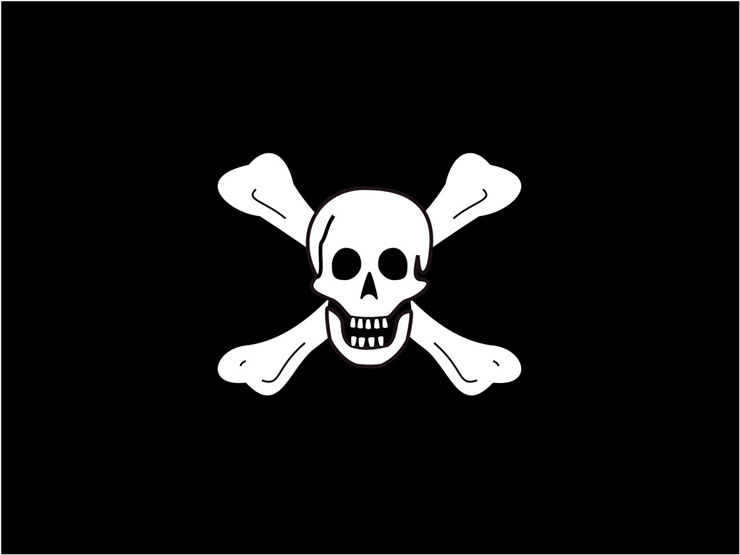Richard Worley - Skull and Crossbones Pirate Flag
The last years of the golden age of piracy were filled with very popular pirates that ransacked east coast of North America and prayed on the merchant shipping in the Caribbean in the years after the end of the War of Spanish succession. But for every big pirate whose name caused fear in the souls of honest men, hundreds other never managed to reach such level of fame… except for several ones who caught the eye of the public, novelists, and historians. Such public attention during the years after organized bands of pirates was wiped out from the seas after the 1730s managed to raise the profile of many smaller pirate crews who never managed to get rich. Richard Worley and his small band of river and sea pirates are the best examples of that. He remains remembered today not for his daring pirate exploits, but for the design of his Jolly Rodger flag that today everyone recognizes.
Nothing is known about early life Richard Worley except that he took part in Queen Anne’s War as a sailor on a privateer ship in the Atlantic theater of that war. We don’t know if he was born in England, or as an English subject in the New World, but what we know is that he became dissatisfied with the end of the hostilities, and as many other privateers he elected to stay on the water and seek his fortune as a pirate. His first acts of piracy occurred on the Delaware River where he robbed one ship and managed to capture small sloop that traveled from Philadelphia. With a small pirate ship that was capable of sea action and a crew of just 12 men, he set his sails toward the Bahamas. It was recorded that he went there because he was fleeing the government pirate hunting ship “The Phoenix” that was outfitted with 20 guns.
Upon arriving at the Bahamas, Richard Worley and his small crew managed to achieve some success. They commandeered a brigantine, sloop, cannons and managed to attract more men to join them. Feeling the first taste of a success of a pirate, Worley and his crew celebrated by writing their own pirate code (in which they claimed they would fight to the death if cornered by authorities) and more importantly, they created new Jolly Rodger flag – a black flag that is today recognizable across the entire world. It featured now-legendary black background, two crossed collar bones, and a white human skull in front of them.
Sadly, shortly after that Richard Worley and his crew died. He was cornered in the Charles Town Harbor by four government warships - galleons “King William”, “Mediterranean”, sloop “Revenge” (a ship that was formerly under the command of pirate Captain Stede Bonnet) and a small six-gun sloop. After failing to escape the blockade and refusing to surrender, militia finally boarded his vessel and engaged in hand to hand battle. According to the accounts of Captain Charles Johnson in his famous 1724 book “A General History of the Robberies and Murders of the most notorious Pyrates”, severely injured Worley and nineteen of his crew members were taken and eventually executed on 17 February 1719, a mere 6 months after Richard Worley committed his first act of piracy on Hudson River. According to other eye-witness reports, Worley actually died on the deck of his ship during the action in the Charles Town harbor.
